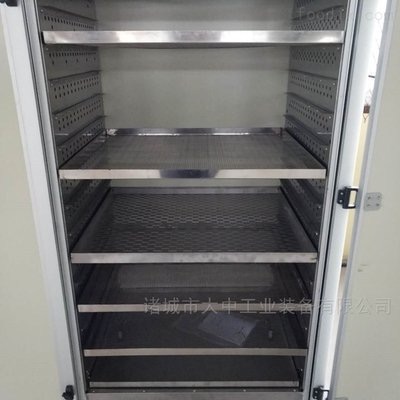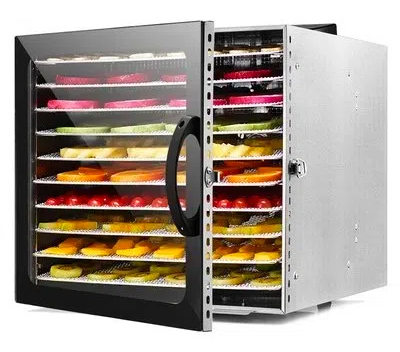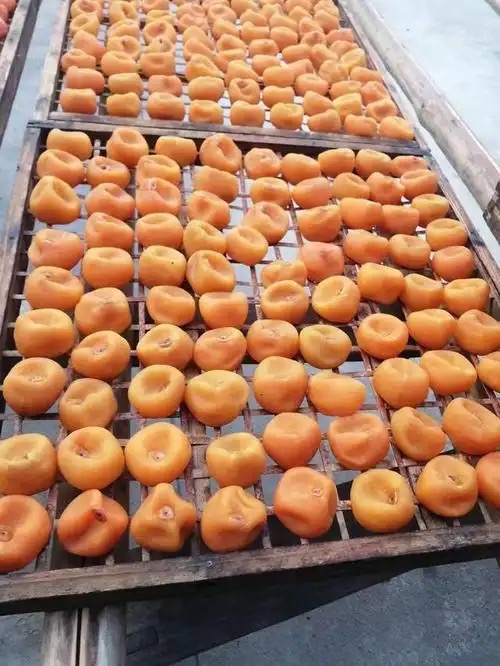
Content Menu
● Introduction to Food Drying
● What is a Full-Size Heat Pump Dryer?
● Efficiency Comparison
● Technology Behind Heat Pump Dryers
● Suitability for Food Drying
● Advantages of Heat Pump Dryers
● Disadvantages of Traditional Dryers
● The Role of Humidity Control
● Case Studies: Successful Applications of Heat Pump Dryers
● Future Trends in Food Drying Technology
● Conclusion
● Frequently Asked Questions
>> 1. What is the main advantage of using a heat pump dryer for food?
>> 2. Can heat pump dryers be used for all types of food?
>> 3. How does the drying time compare between heat pump dryers and traditional dryers?
>> 4. Are heat pump dryers environmentally friendly?
>> 5. What maintenance is required for a heat pump dryer?
In the world of food processing, drying is a crucial step that affects the quality, shelf life, and flavor of food products. As a manufacturer of food drying machines, understanding the differences between various drying technologies is essential. This article will explore how full-size heat pump dryers compare to traditional dryers, focusing on their efficiency, technology, and suitability for food drying applications.

Introduction to Food Drying
Food drying is a method of preserving food by removing moisture, which inhibits the growth of bacteria, yeasts, and molds. Traditional methods of drying include sun drying, air drying, and using conventional ovens. However, these methods can be inconsistent and may not provide the desired quality. This is where modern drying technologies, such as heat pump dryers, come into play.
What is a Full-Size Heat Pump Dryer?
A full-size heat pump dryer is a sophisticated appliance that uses a heat pump system to dry food products. Unlike traditional dryers that rely on direct heat, heat pump dryers use a refrigeration cycle to extract moisture from the food. This method is more energy-efficient and allows for precise temperature control, which is crucial for preserving the nutritional value and flavor of food.
Efficiency Comparison
One of the most significant advantages of heat pump dryers is their energy efficiency. Traditional dryers often consume a large amount of energy due to their reliance on high temperatures to evaporate moisture. In contrast, heat pump dryers operate at lower temperatures, which not only saves energy but also reduces the risk of damaging delicate food products.
For example, while a traditional dryer may operate at temperatures exceeding 70°C (158°F), a heat pump dryer typically operates between 30°C to 60°C (86°F to 140°F). This lower temperature range is ideal for drying fruits, vegetables, and herbs without compromising their quality.
Technology Behind Heat Pump Dryers
Heat pump dryers utilize a closed-loop system that circulates air within the drying chamber. The process begins with the heat pump extracting moisture-laden air from the chamber. This air is then passed over a heat exchanger, where the moisture is condensed and removed. The dry air is then reheated and returned to the chamber, creating a continuous cycle.
This technology not only enhances drying efficiency but also allows for better control over humidity levels. By maintaining optimal humidity, heat pump dryers can prevent the formation of mold and ensure uniform drying.
Suitability for Food Drying
When it comes to food drying, the suitability of the dryer is paramount. Heat pump dryers are particularly well-suited for drying a wide range of food products, including:
1. Fruits: Heat pump dryers preserve the color, flavor, and nutrients of fruits like apples, bananas, and berries.
2. Vegetables: Delicate vegetables such as herbs and leafy greens can be dried without losing their essential oils and flavors.
3. Meats: Heat pump dryers can effectively dry meats for jerky production while maintaining safety standards.
In contrast, traditional dryers may not provide the same level of quality and consistency, especially for sensitive food items.

Advantages of Heat Pump Dryers
1. Energy Efficiency: As mentioned earlier, heat pump dryers consume less energy, making them a cost-effective option for food manufacturers.
2. Quality Preservation: The ability to control temperature and humidity helps preserve the nutritional value and flavor of food products.
3. Versatility: Heat pump dryers can handle various food types, making them suitable for diverse applications in the food industry.
4. Environmentally Friendly: With lower energy consumption, heat pump dryers contribute to reduced carbon footprints.
Disadvantages of Traditional Dryers
While traditional dryers have been used for many years, they come with several disadvantages:
1. High Energy Consumption: Traditional dryers often lead to higher operational costs due to their energy-intensive processes.
2. Inconsistent Results: Variability in drying times and temperatures can result in unevenly dried products.
3. Quality Loss: High temperatures can degrade the quality of food, leading to loss of flavor, color, and nutrients.
The Role of Humidity Control
Humidity control is a critical factor in the drying process. In traditional drying methods, the ambient humidity can significantly affect the drying time and quality. High humidity levels can slow down the drying process, leading to longer drying times and potential spoilage. Heat pump dryers, on the other hand, can effectively manage humidity levels within the drying chamber, ensuring optimal conditions for drying.
By maintaining a consistent low humidity environment, heat pump dryers can accelerate the drying process while preserving the integrity of the food. This is particularly important for products like dried fruits and vegetables, where moisture content directly impacts shelf life and quality.
Case Studies: Successful Applications of Heat Pump Dryers
Several food manufacturers have successfully implemented heat pump dryers in their production processes, leading to improved product quality and efficiency. For instance, a company specializing in dried fruit products reported a significant increase in product quality after switching from traditional drying methods to heat pump technology. The fruits retained their vibrant colors and natural flavors, resulting in higher customer satisfaction and increased sales.
Another case involved a vegetable processing plant that struggled with inconsistent drying results using conventional methods. After transitioning to heat pump dryers, the plant achieved uniform drying across various vegetable types, reducing waste and improving overall efficiency.
These case studies highlight the practical benefits of heat pump dryers in real-world applications, demonstrating their effectiveness in enhancing food quality and operational efficiency.
Future Trends in Food Drying Technology
As the food industry continues to evolve, so do the technologies used in food processing. Heat pump drying technology is expected to advance further, with innovations aimed at improving efficiency and product quality. Some potential trends include:
1. Integration with IoT: The incorporation of Internet of Things (IoT) technology could allow for real-time monitoring and control of drying processes, enhancing efficiency and reducing energy consumption.
2. Smart Drying Systems: Future heat pump dryers may feature smart algorithms that optimize drying parameters based on the specific food type, ensuring the best possible results.
3. Sustainability Initiatives: As sustainability becomes increasingly important, manufacturers may focus on developing heat pump dryers that utilize renewable energy sources, further reducing their environmental impact.
Conclusion
In conclusion, full-size heat pump dryers offer significant advantages over traditional dryers in the food drying process. Their energy efficiency, ability to preserve food quality, and versatility make them an ideal choice for food manufacturers looking to enhance their drying operations. As the demand for high-quality dried food products continues to grow, investing in modern drying technology like heat pump dryers is essential for staying competitive in the market.

Frequently Asked Questions
1. What is the main advantage of using a heat pump dryer for food?
The main advantage is energy efficiency, along with better preservation of food quality and nutrients.
2. Can heat pump dryers be used for all types of food?
Yes, heat pump dryers are versatile and can effectively dry fruits, vegetables, meats, and herbs.
3. How does the drying time compare between heat pump dryers and traditional dryers?
Heat pump dryers may have longer drying times, but they provide more consistent results and better quality.
4. Are heat pump dryers environmentally friendly?
Yes, they consume less energy, which reduces their environmental impact compared to traditional dryers.
5. What maintenance is required for a heat pump dryer?
Regular cleaning of filters and ensuring proper airflow are essential for maintaining efficiency.












